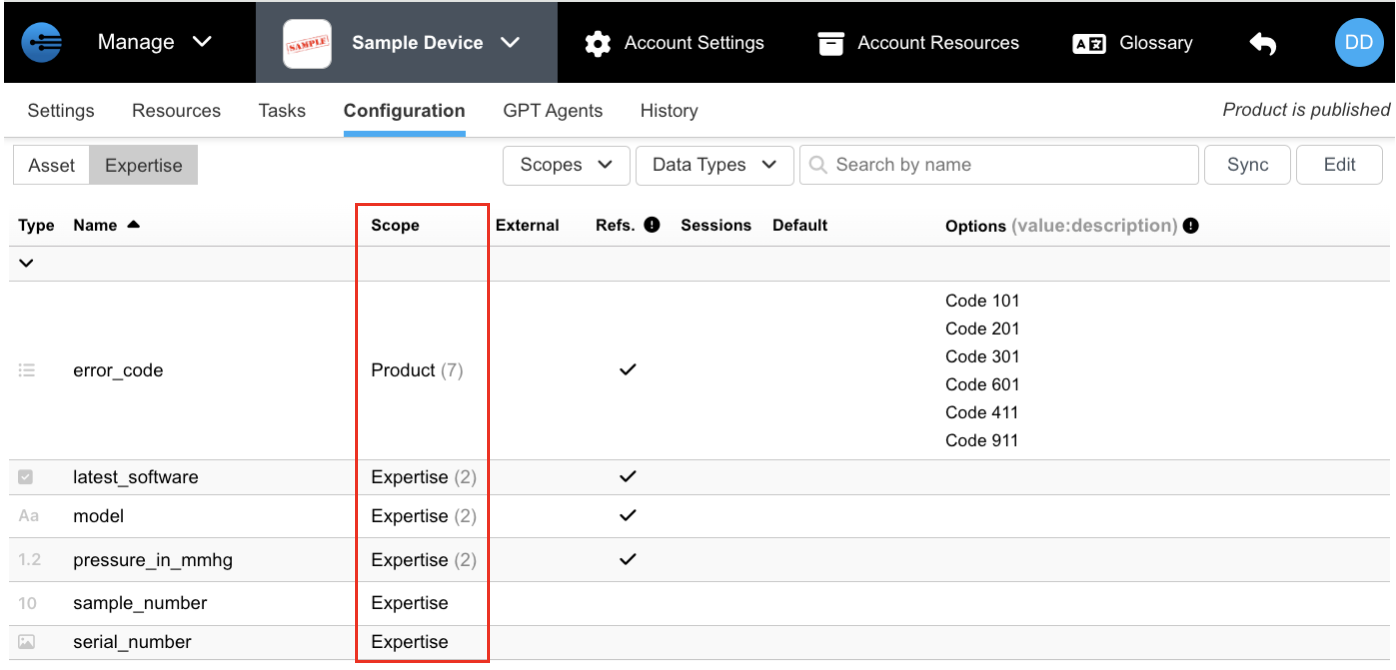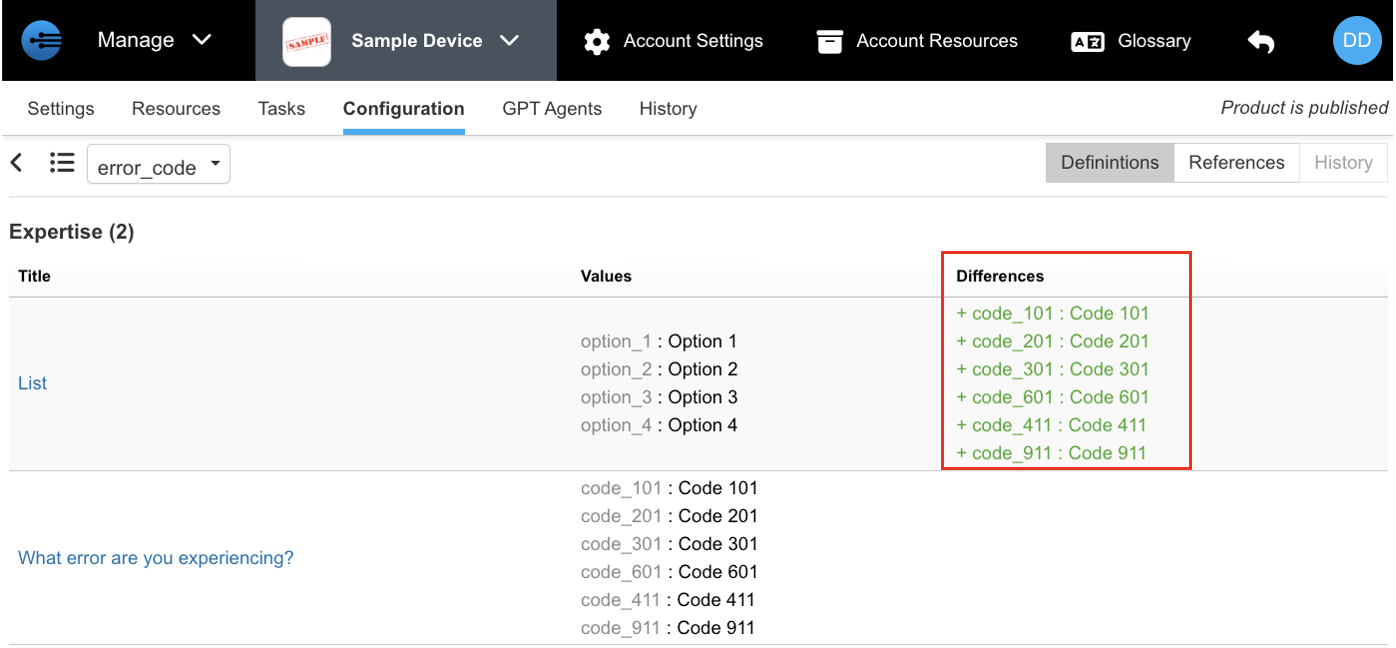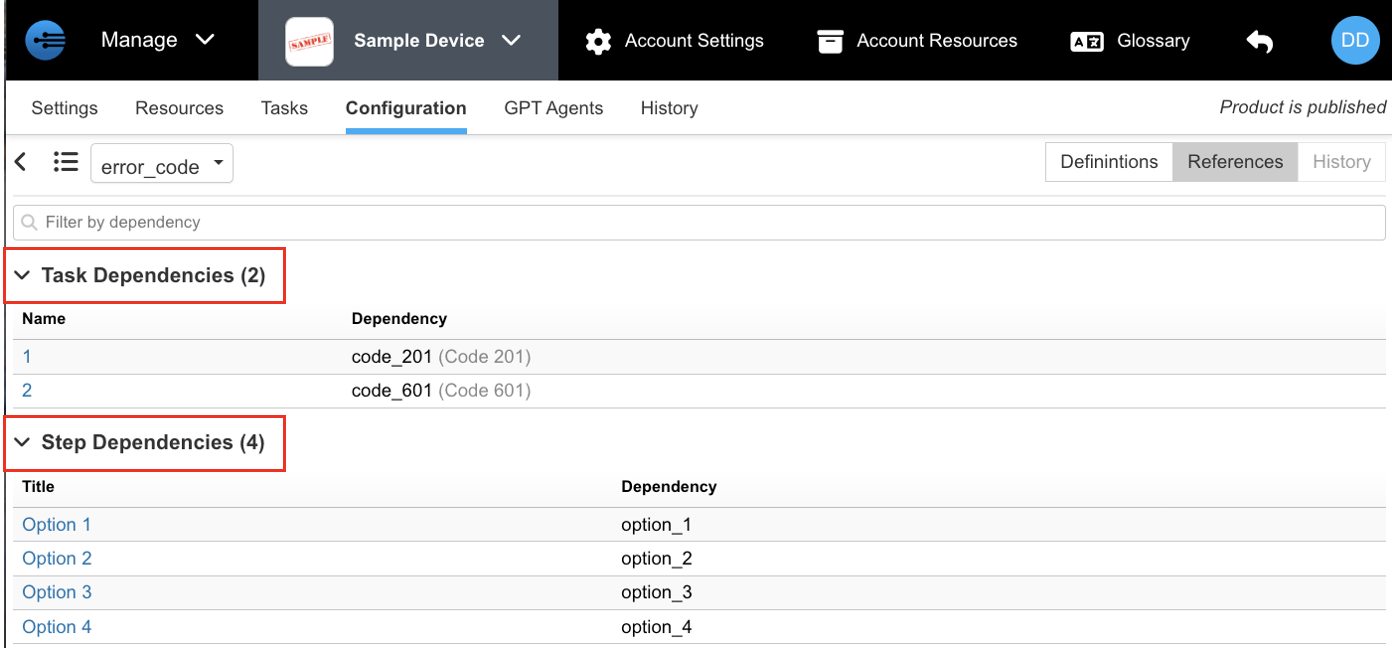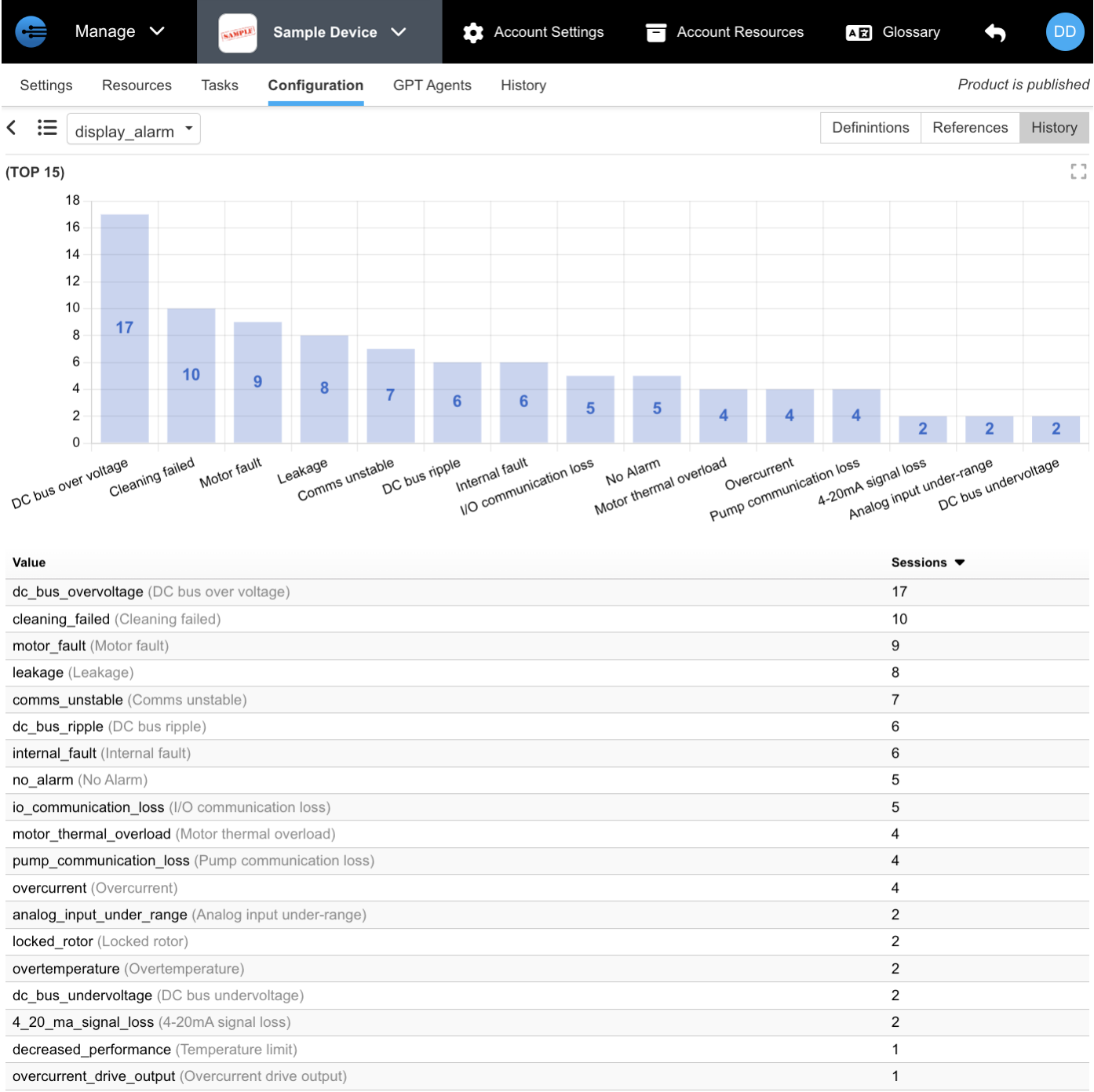Where Are My Variables Being Used?
The data dictionary, found under the configuration tab, not only functions as InSkill's variable creator but it also functions as our variable library. The data dictionary provides helpful information on where and how the variables are being used. This becomes very useful when editing variables as you can easily change the variables properties and also keep track of where the variables are being used. It is good practice to only edit your variables in the data dictionary and not directly in the step/task. Editing a variable in the data dictionary is critical as editing a variable in the data dictionary will trickle down to every use of the variable. On the other hand, if the variable is edited in a step/task then its changes are only in affect in that step and will not affect other uses of this variable.

On the main page of the data dictionary, you can determine the amount of times each variable has been used. This information is denoted by the number found in parenthesis under Scope. To learn more information about the variable usage, click on the variable from, which you will have three tabs to navigate between. The tabs are seen below: Definitions, References, and History

Definitions
The definitions tab under configuration is designed to show the user how a particular variable is being used. Specifically, it provides you with details on the variable type and its listed options. As you implement this variable in more places this list will grow allowing the author to keep track of its use while ensuring that it's used correctly.

Under definitions you will see 3 columns: Title, Values, and Differences. Title contains a hyperlink that will take you to that variables use case. Values shows you what options are being prompted to the user when the variable is called. While Differences highlights discrepancies between how it was constructed in the data dictionary versus how its used in expertise.

If a variables use in expertise prompts different options than what it was initially designed to prompt (as made in the data dictionary) then Differences will highlight the discrepancies between the two. Fixing these discrepancies can be done by clicking the title which will take the user to the step/task where the variable was implemented. Please note that it is crucial to keep the data dictionary and expertise consistent with each other as these discrepancies can cause the task to malfunction. The main culprit of these differences arising is from editing variables directly in a task. Editing variables directly in a task/step, as stated previously, will not change the definition of the variable in the data dictionary and will only change its characteristics in that exact use.
References
The references tab under configuration summarizes where the variable is being used and what dependency is being implemented. Moreover, references are categorized by whether they are implemented in a task or in a step. The following is typical when looking at a variables references. Similar to definitions, the name/title contains a hyperlink that allows the user to go to the location of where this dependency is being used and to edit it if necessary.

History
The history tab under the configuration page shows you the sessions that have used these dependencies. This will give you a better idea of which options are being selected when this variable is . History will show you the top 15 options that are chosen in sessions.

Updated 11 months ago
